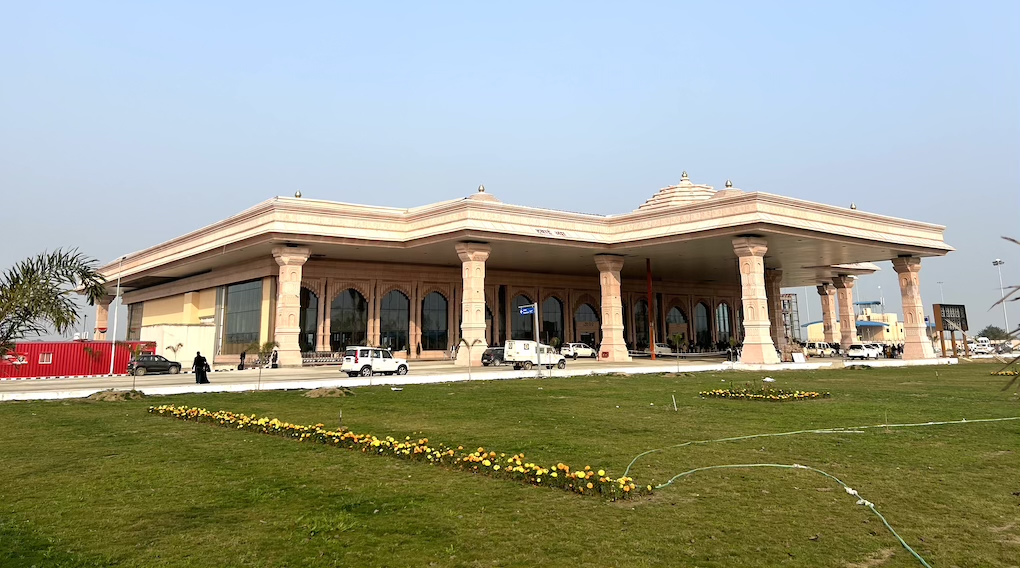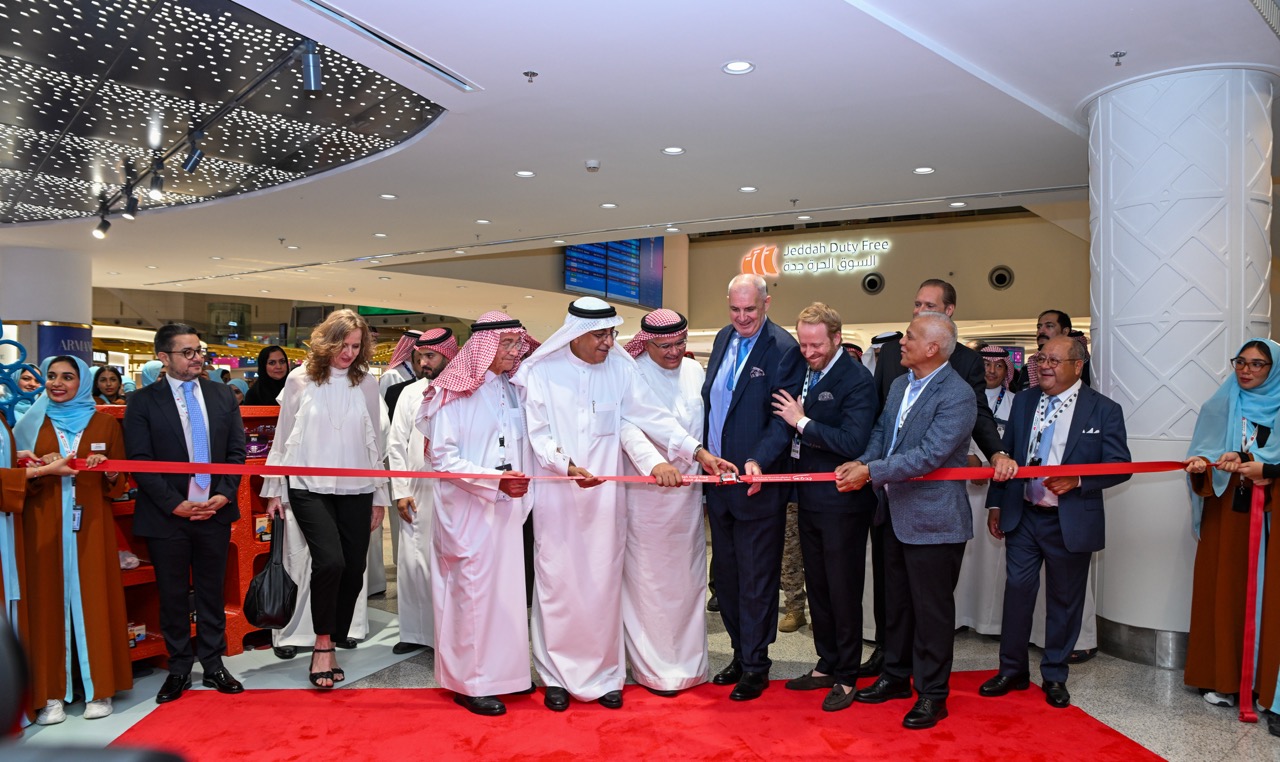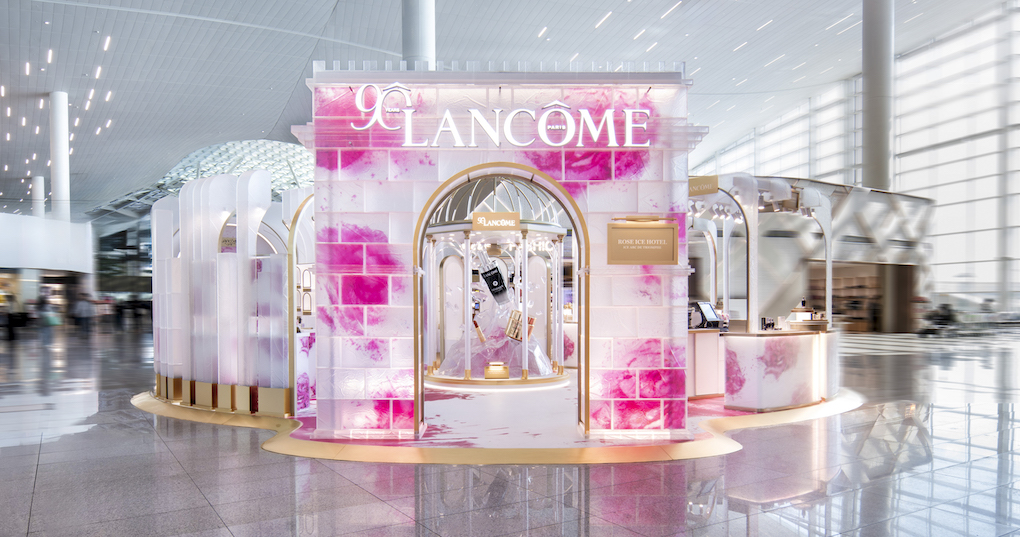(The opinions expressed in this article are those of the contributor and not necessarily of The Moodie Davitt Report.)
INDIA. It was a chance decision that we took early this month to travel to the holy town of Ayodhya, writes S. Shriram*.
Within a blink, I had completed the key arrangements – the flights, our stay and most importantly, sorting out the food during the flights and while in the town.
The airport bears the name of Maharishi Valmiki, author of the holy script of ‘Ramayana’ – the story of Lord Ram. With a short to long-term outlook, the Aviation Ministry of India has accorded international airport status to Ayodhya.
It is expected that from winter 2024 (starting in September), international flights from the Middle East and Southeast Asia will commence operations at Maharishi Valmiki International Airport.
The town of Ayodhya is historic and religious. It is currently the cynosure of all eyes and ears as a new temple dedicated to Lord Shri Ram (whose name I bear) was unveiled on 22 January 2024 by the Prime Minister of India Shri Narendra Modi.

Maharishi Valmiki International was inaugurated on 30 December 2023, also by the Prime Minister. Full-fledged operations began on 6 January this yer and currently M/s Indigo, Spicejet, Akasa Air and Air India operate direct flights from various parts of India to Ayodhya.
Built at a cost of Rs.14.5 billion (US$175 million), the airport can accommodate 1 million passengers a year. Planes from the A-321 and B-737 families land on the runway, which is equipped with ILS (instrumental landing system), so flights can operate in the dark.

A round trip to the town from most big cities, including New Delhi, Mumbai and Chennai, costs Rs.12,000 (US$145) when booked a fortnight in advance. However, from Bangalore ticket costs seem to be double. Quite an advantage for airlines operating from Bangalore who choose to pick up another slot in the interim, even as demand increases during the ensuing vacation months.
There are no aerobridges and passengers are ferried in buses from the aircraft parking bay to the terminal building. Interestingly, we were ferried in a bus with Indigo Airlines branding – perhaps our airline was using the services of the other airline for a fee, for want of not wanting to invest in its own fleet or outsourcing to ground-handling agencies.
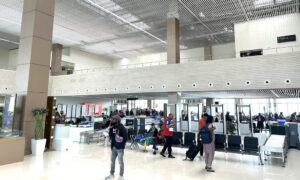
There are two baggage belts in the arrivals hall and the efficiency was evident, with the staff being notably attentive to the passengers’ needs. The security staff, deployed by Central Industrial Security Force, were extraordinarily cordial to passengers, a rarity across many Indian airports.
Right after baggage retrieval, we moved to a small enclosure which seemed like a ‘Meet & Greet’ area, though visitors are not allowed inside currently. In many Indian airports, it’s usual culture to allow visitors into such an area for a ticketed fee, around Rs.100 (US$1.20).
This is a great source of income to Airports Authority of India (AAI), which invests and manages over 125 of the 150-plus airports that are currently operational in the country. The tenders for such a counter are floated for a period ranging from 12 to 24 months and the incumbent is allowed to offer other services such as baggage delivery, VIP escort and, sometimes, even taxi services.
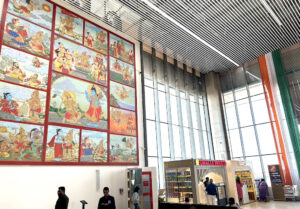
It’s a pity that currently there is no dedicated counter for hailing taxi services for arriving passengers. As in former times (before 2008), one has to haggle with the local taxi drivers who have dropped off departing passengers.
The concourse area outside the terminal building houses a large welcome booth set-up by the government. I hope there will be F&B kiosks opened here, to entice the waiting guests as well as for the convenience of arriving passengers. Due to steep parking charges, taxis park their cars around 500 metres away, so passengers have to walk this distance.
The departure hall is spread over 20,000sq ft – it houses an upper deck, where a food court is expected to be launched some time in the future. There are at present two food counters and one general shop selling trinkets and other merchandise.
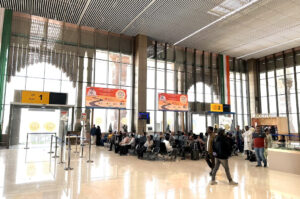 As is a trend across many Indian airports, a family of 12 next to me were savouring homemade food much to my anguish as I was split between eating soggy sandwiches from the airport or staying hungry. The key reasons to prefer homemade food are the limited choice at the airport and the uber-expensive food & beverages sold at these counters.
As is a trend across many Indian airports, a family of 12 next to me were savouring homemade food much to my anguish as I was split between eating soggy sandwiches from the airport or staying hungry. The key reasons to prefer homemade food are the limited choice at the airport and the uber-expensive food & beverages sold at these counters.
Done well, I am quite sure food can become a big draw at this airport, with departing passengers being in a jolly, happy mood after visiting the holy town and soaking in devotion and celebration during their stay.
A tuck shop with various trinkets, souvenirs and memorabilia should be a must-have at the airport from day one. Not sure if AAI is working on such a tender.
While we shopped on the streets of Ayodhya for over two hours and contributed well to the local economy, I am quite sure many passengers would have chosen not to buy downtown. An opportunity missed to bring significant revenue for the airport.
These shops must focus on selling accesibly priced items and target huge volumes to entice shoppers, rather than sporting an eye-candy shop with limited sales.
The airport store could have a tie-up with airlines for an instant delivery model through flight cargo, especially for larger items such as photo frames, models made of marble stone (a speciality in this part of the country), works of art, etc.
Many passengers avoid carrying larger gift items, such as art pieces, due to the risk of breakages on the flight. Many times, travellers also incur extra charges from airlines, which could be more than the cost of the item – this deters them from shopping for larger items.
Advertising opportunities inside and outside the terminal building are rudimentary at the moment. Over time, these spots are expected to fill up with clients across tourism, retail, automobiles and more.
A few teething issues aside, however, the new airport has shaped up well, yet another step forward for the country’s burgeoning aviation sector. ✈
*Experienced aviation and travel retail professional S. Shriram is an occasional contributor to The Moodie Davitt Report.






